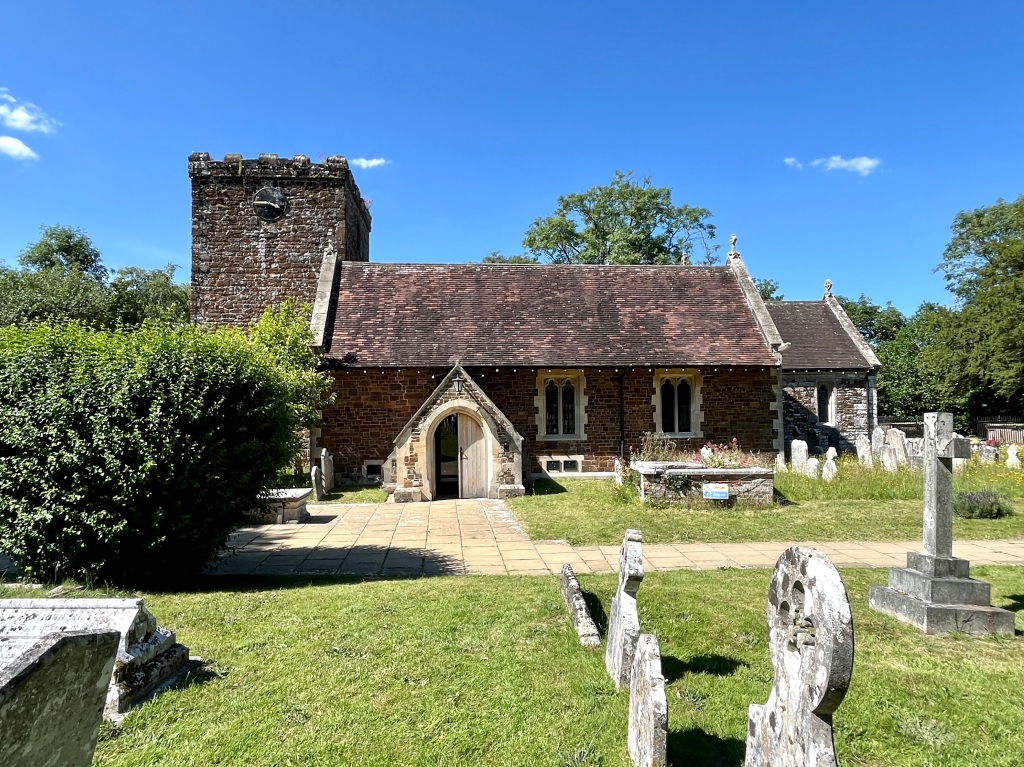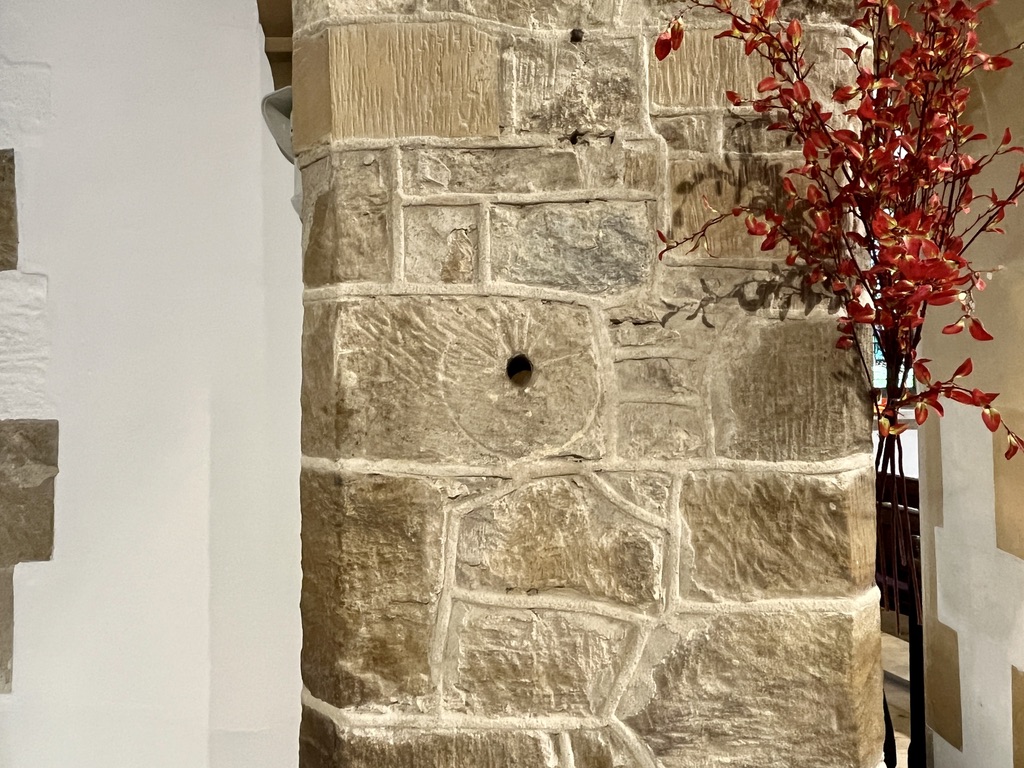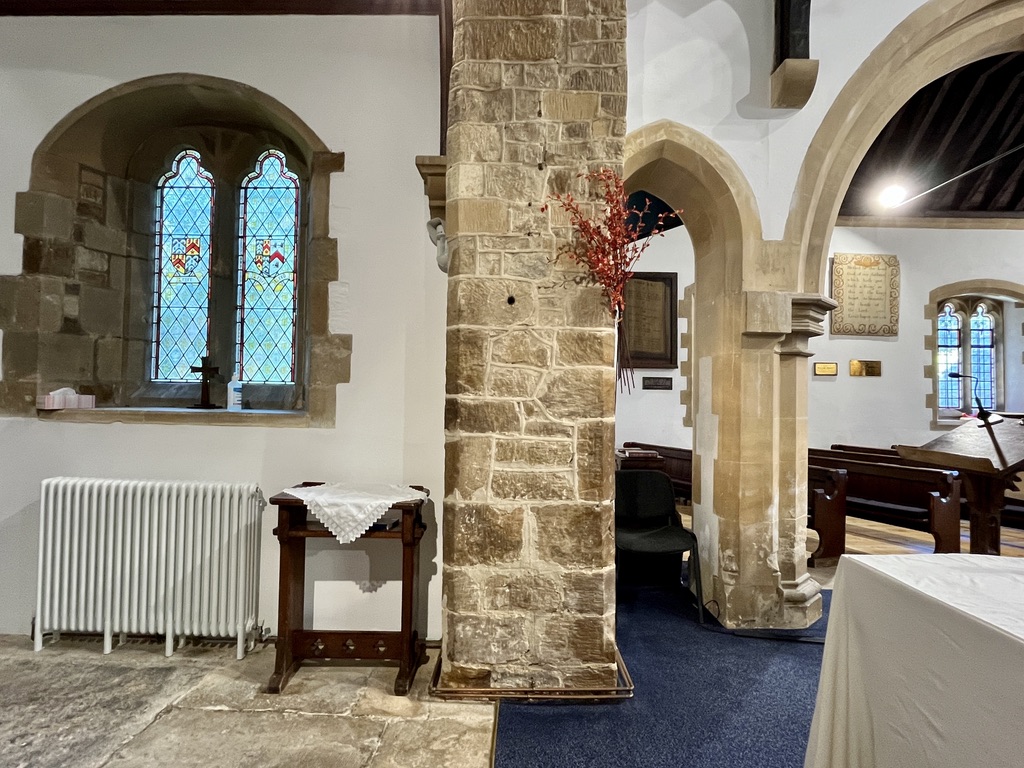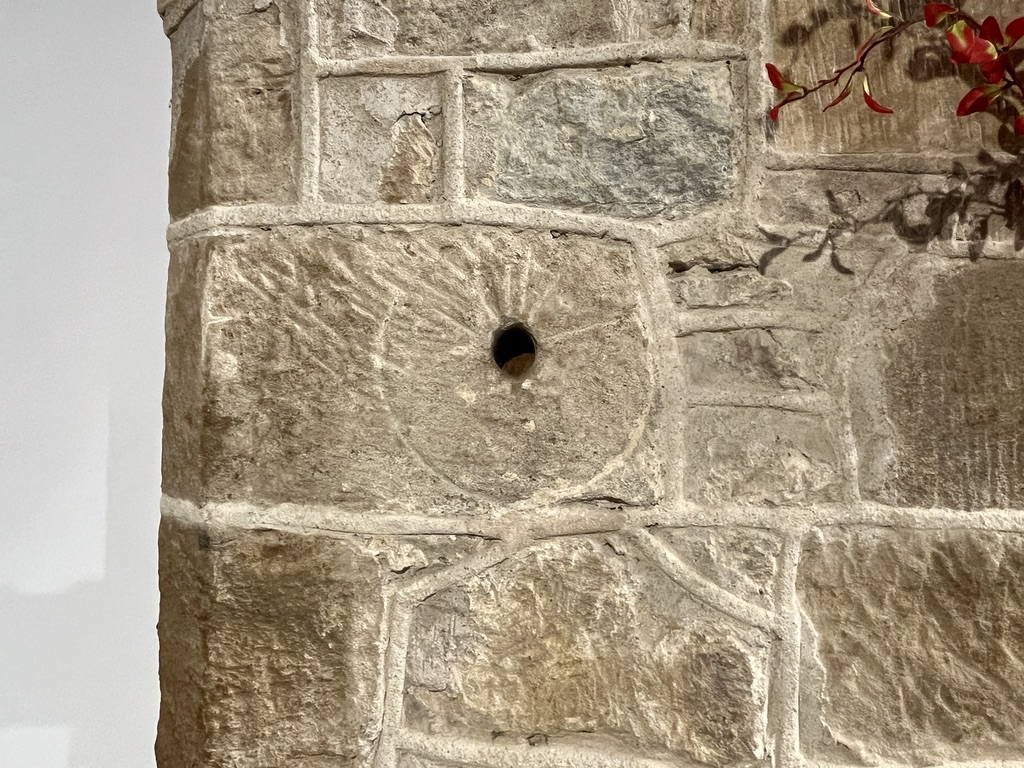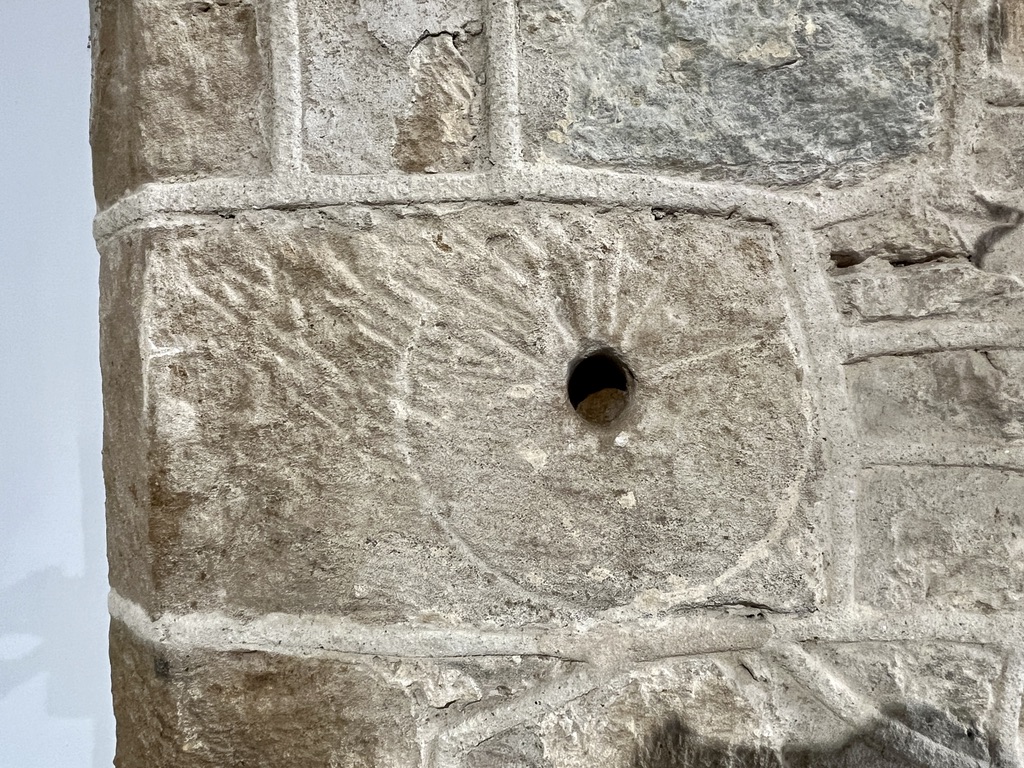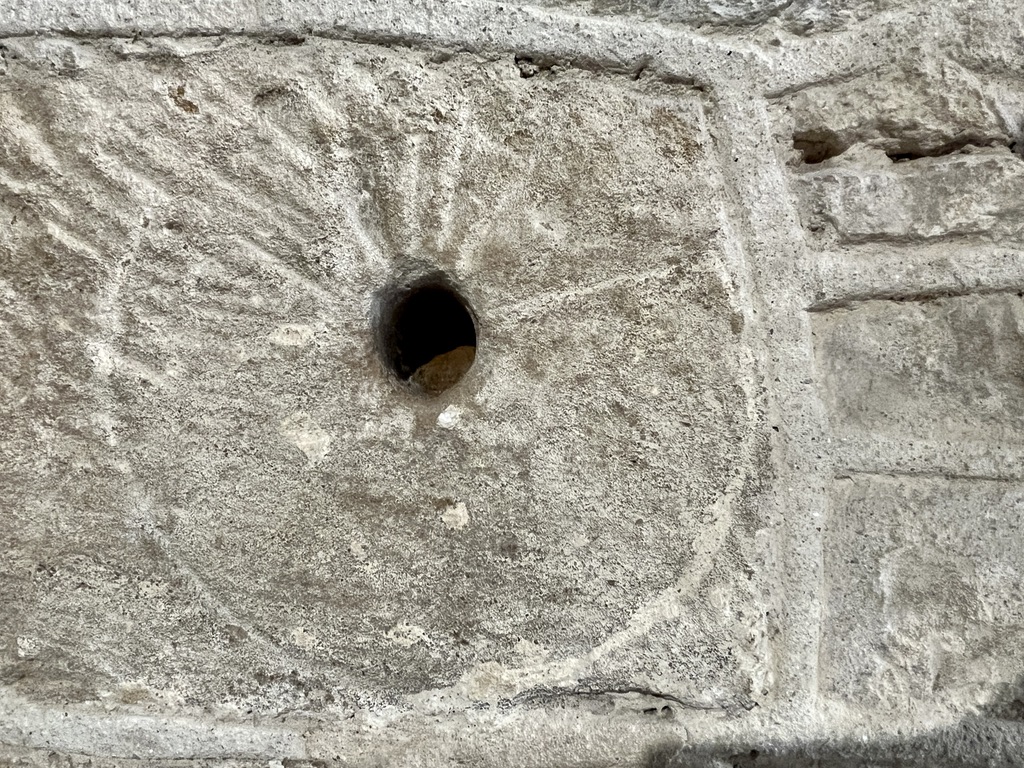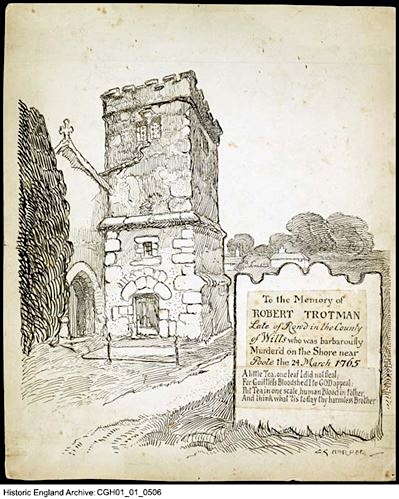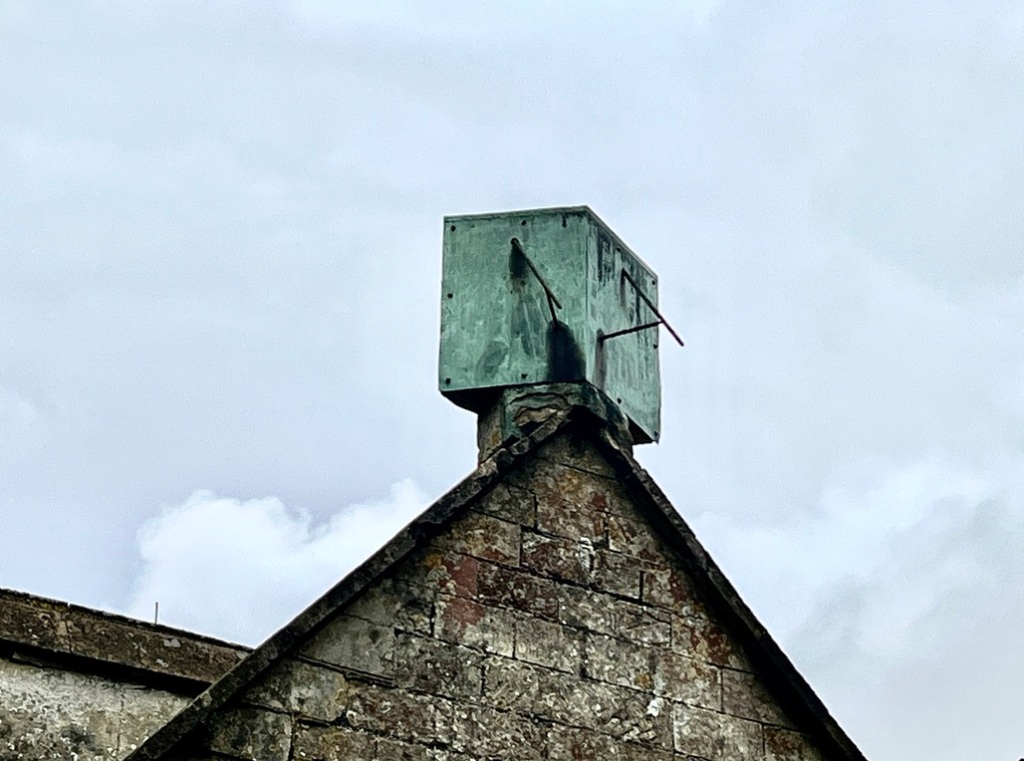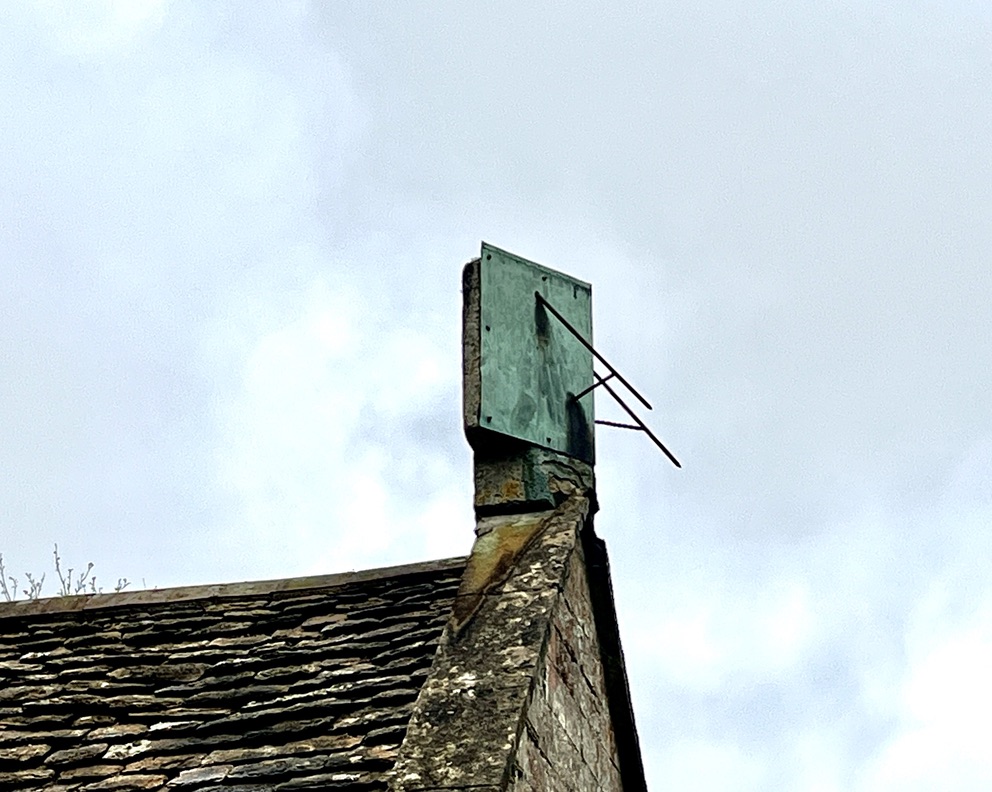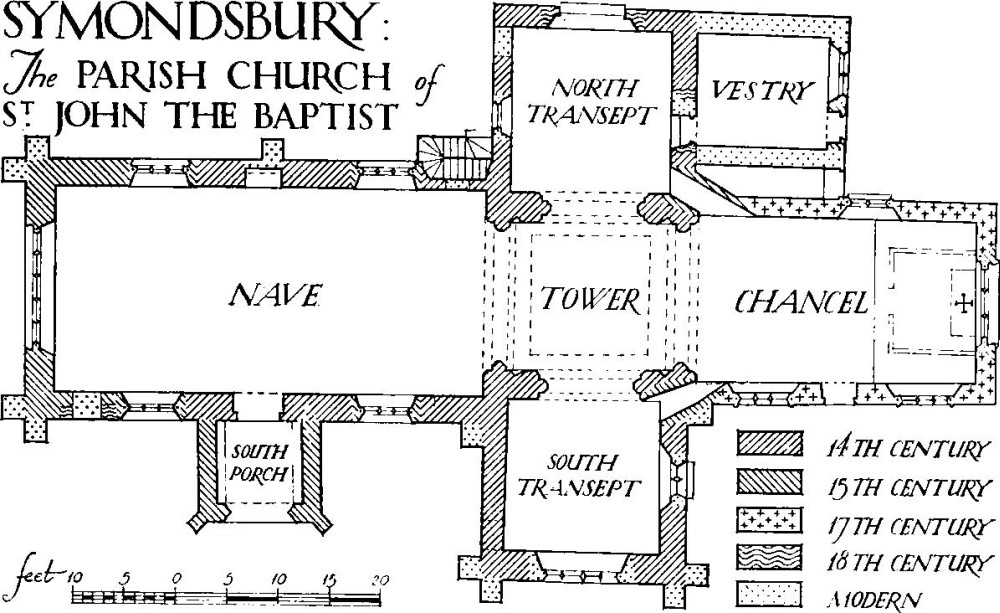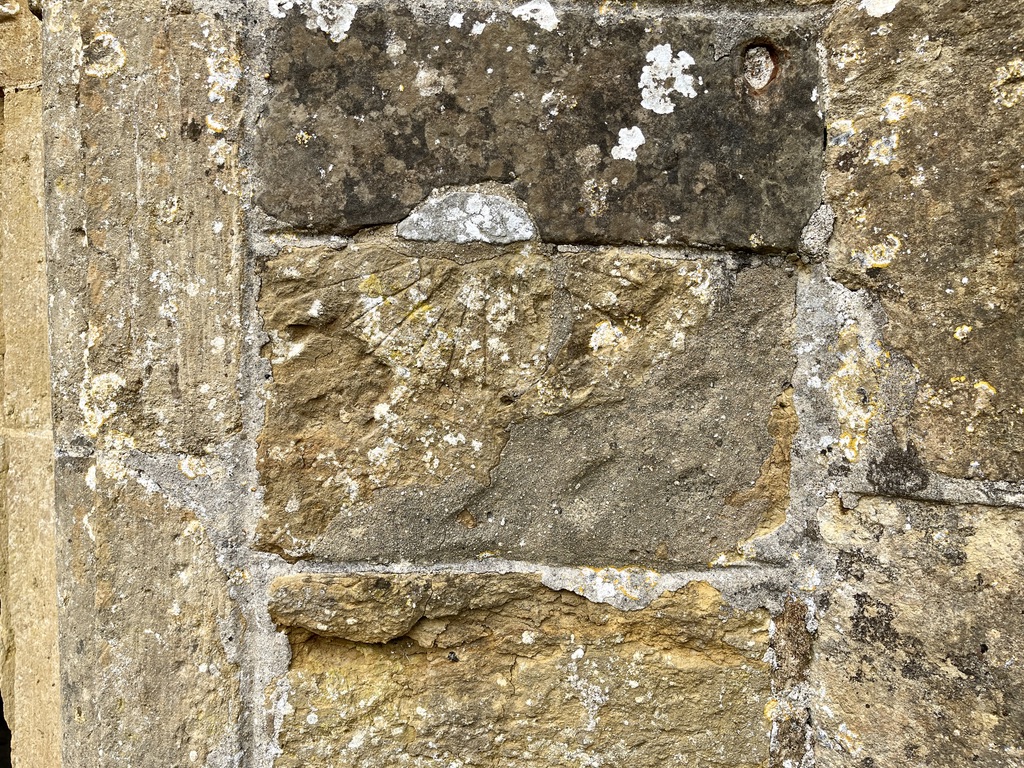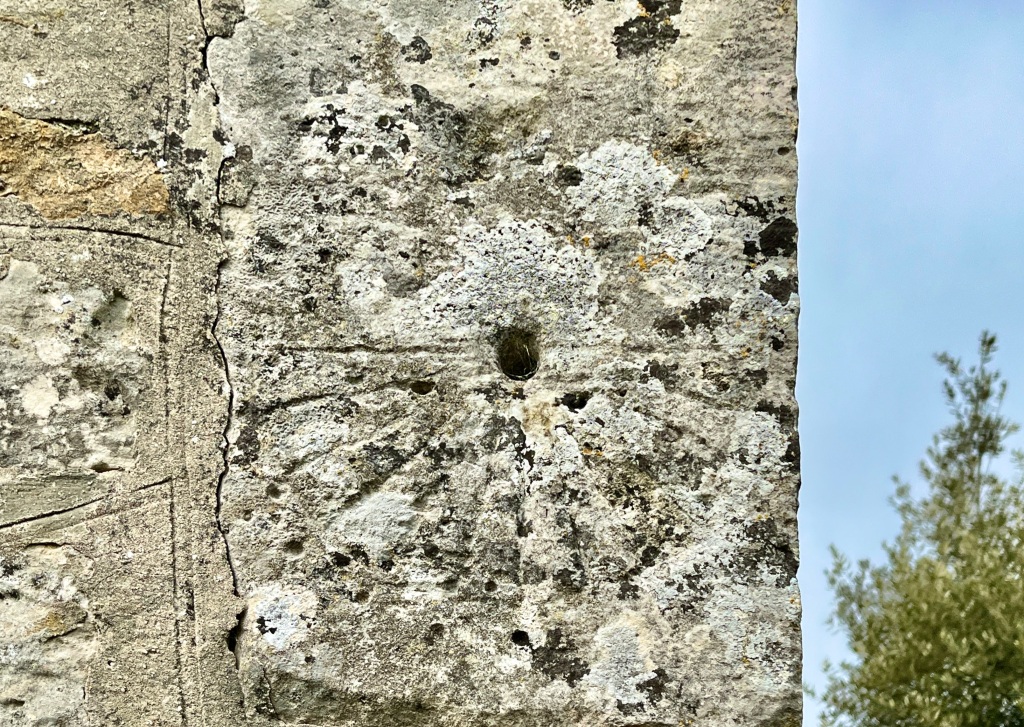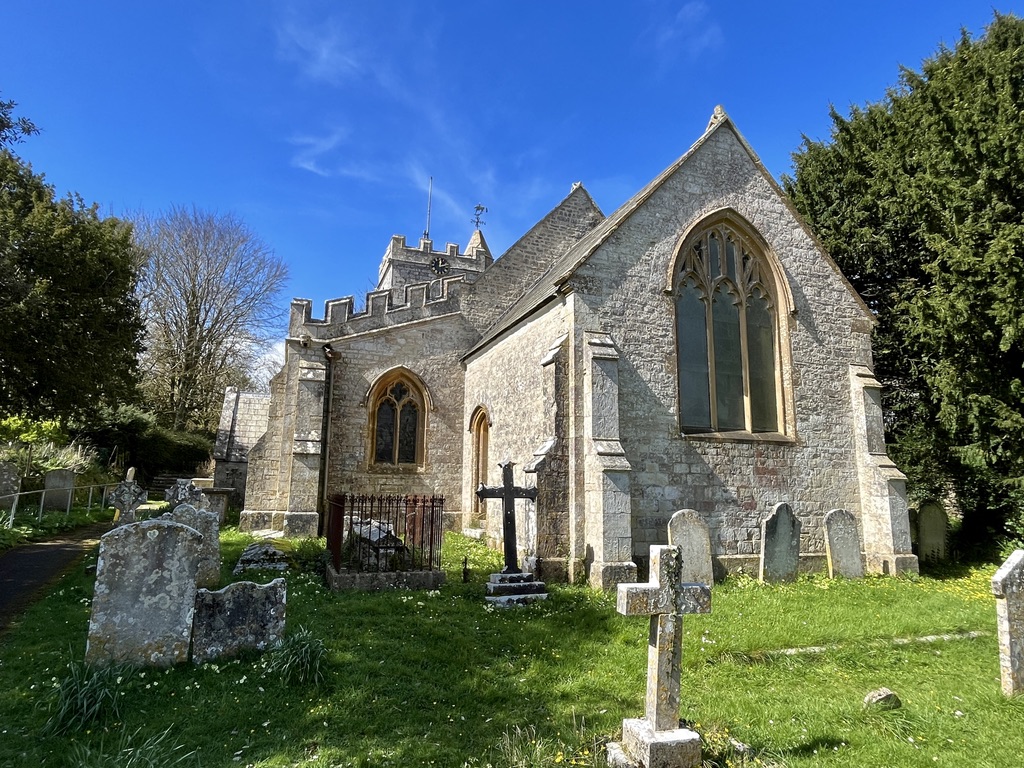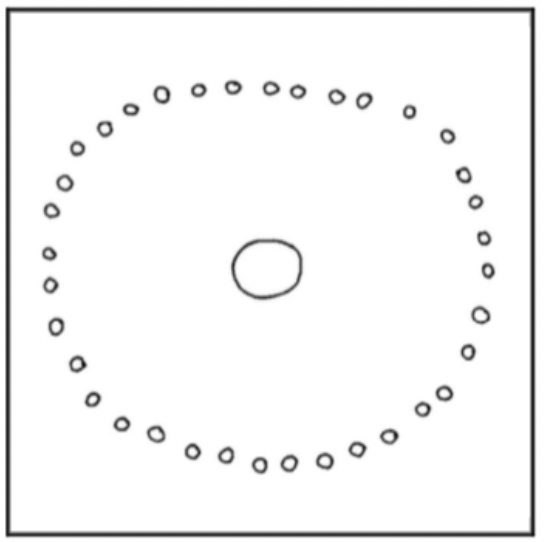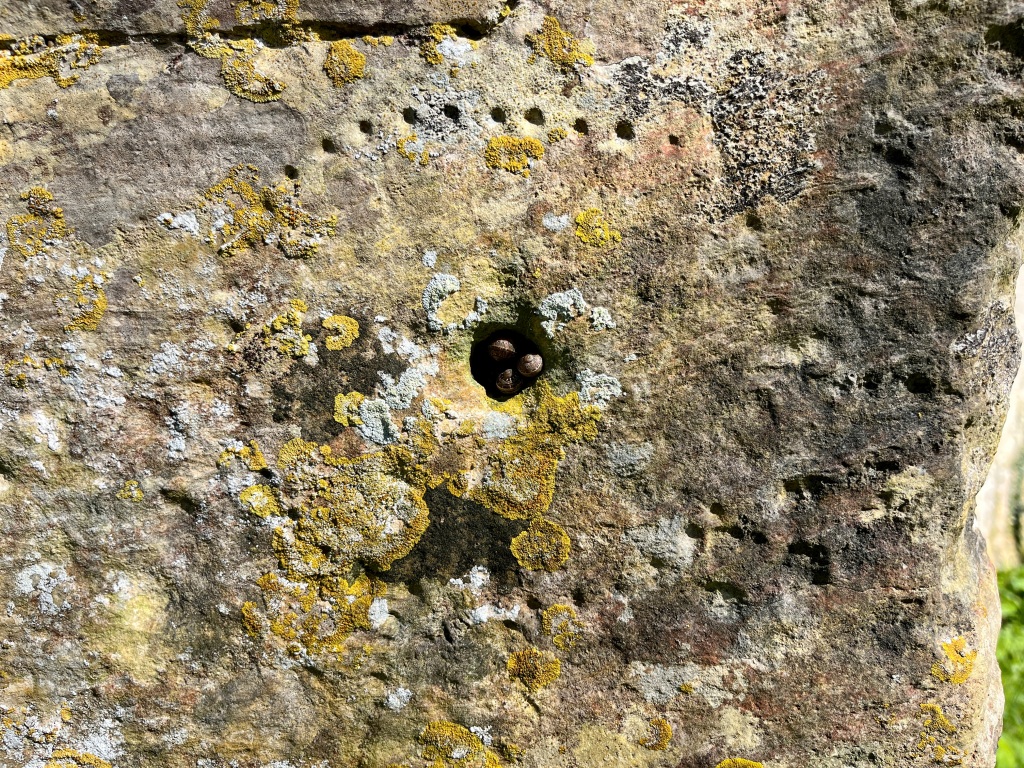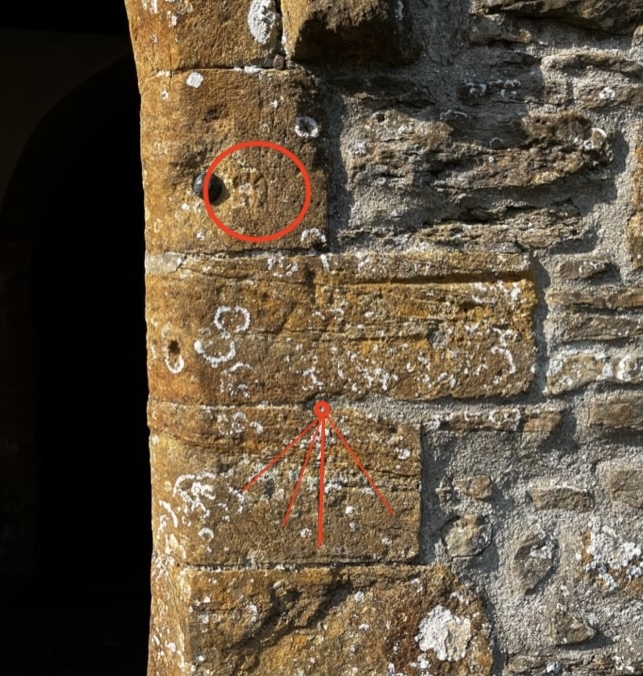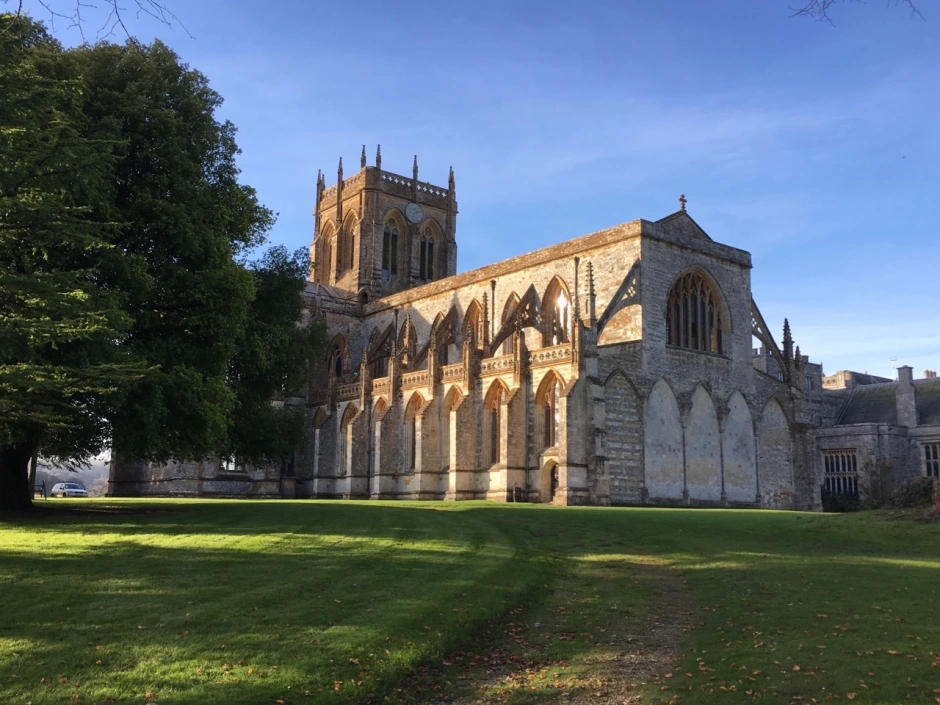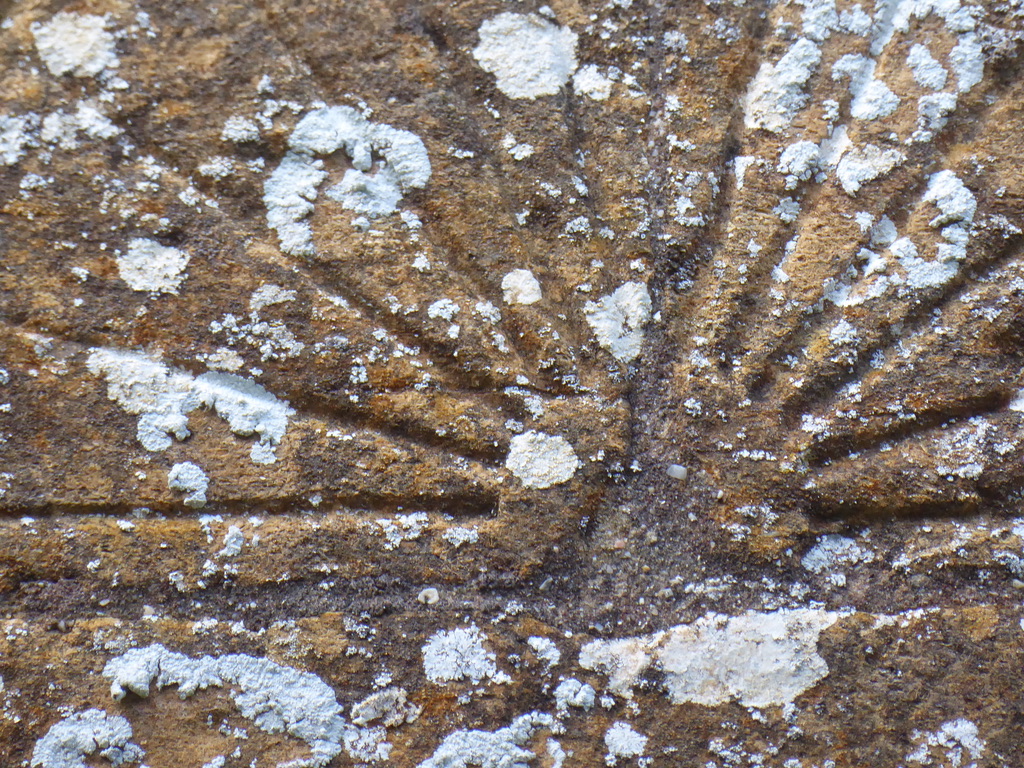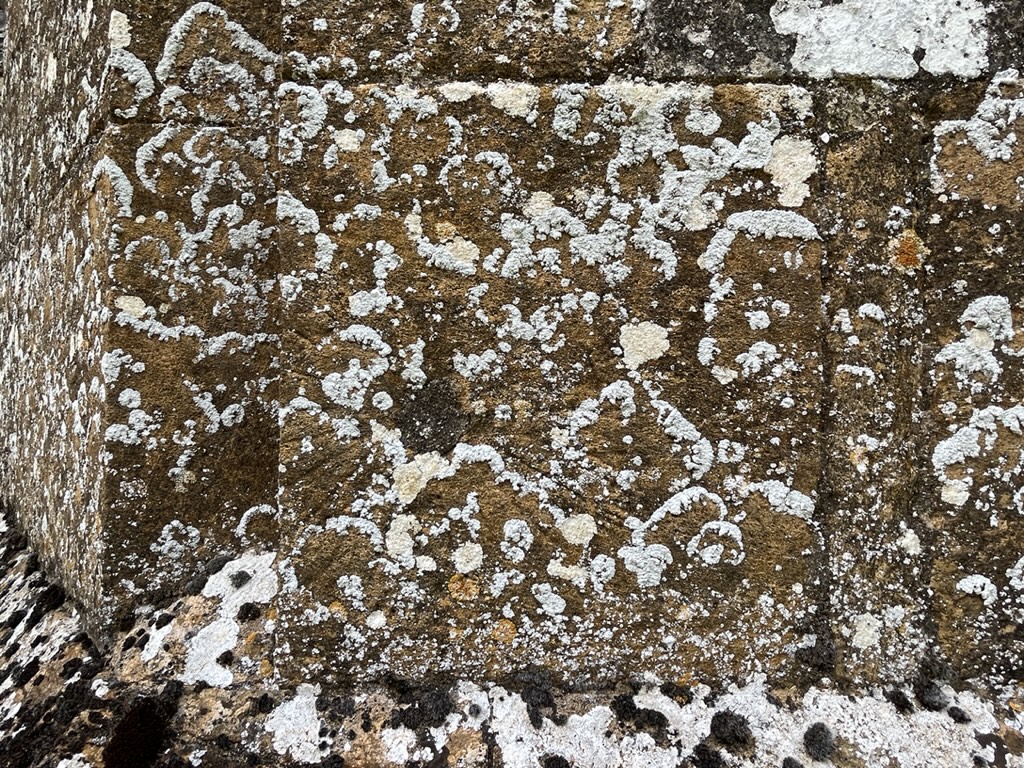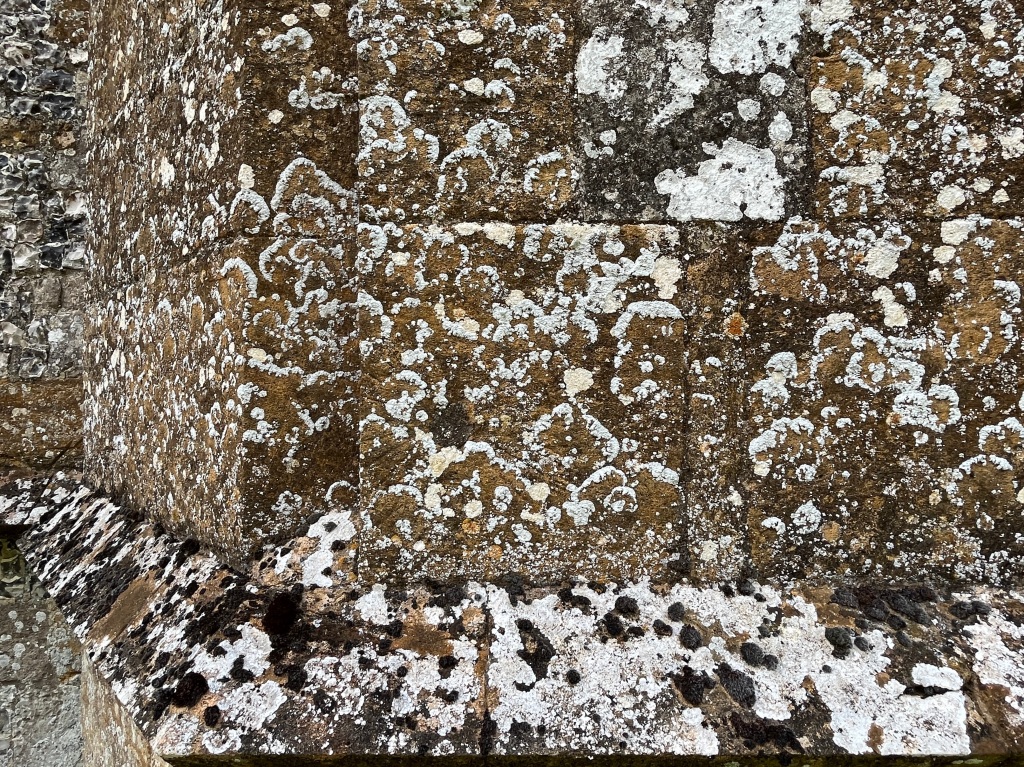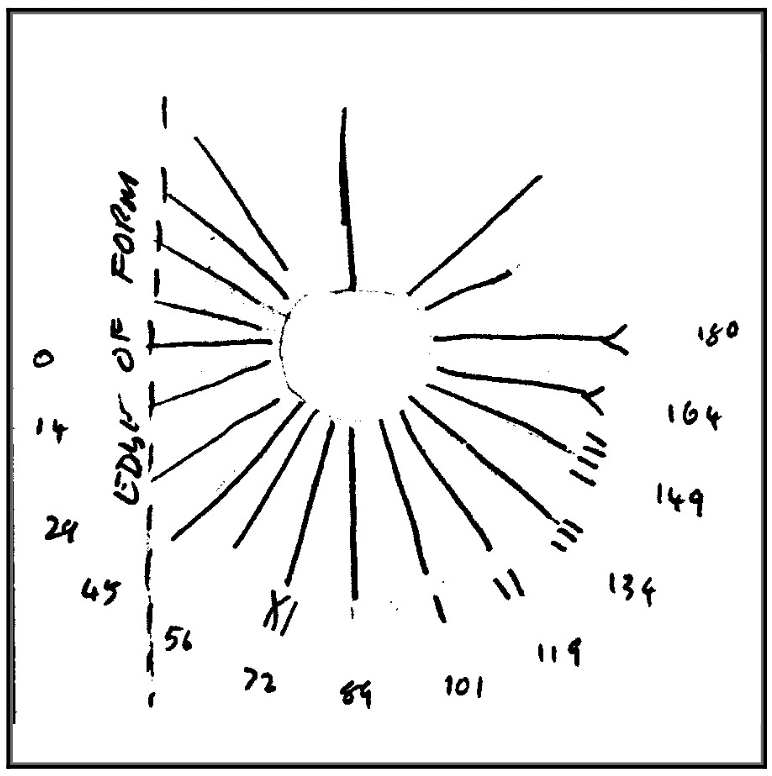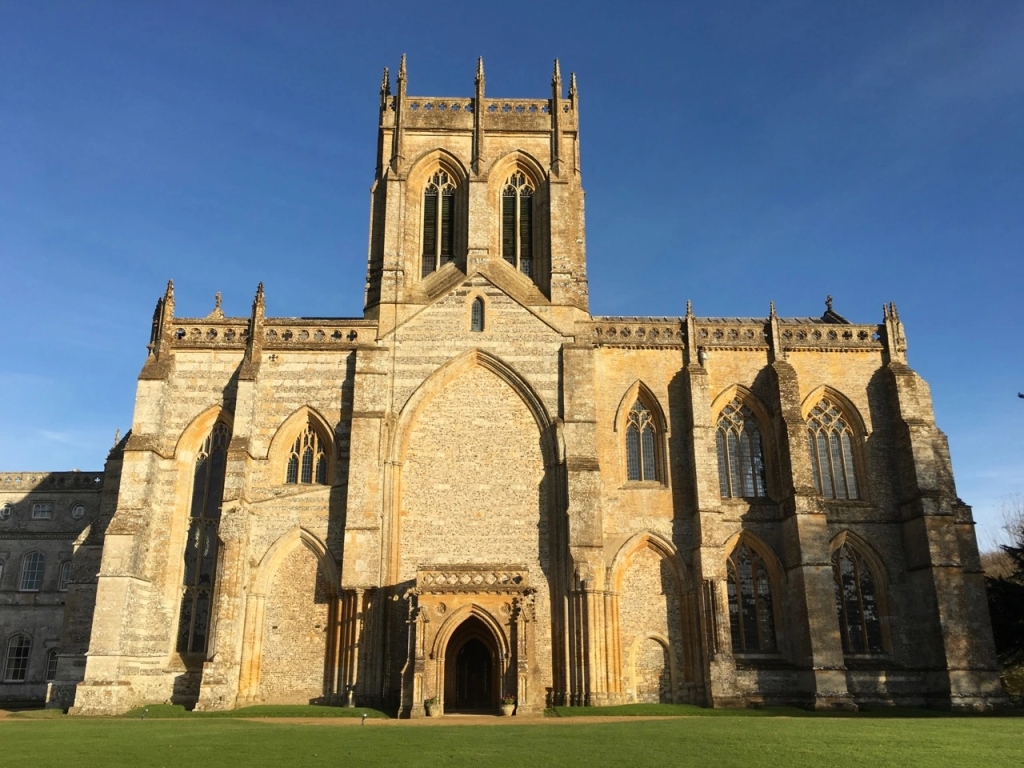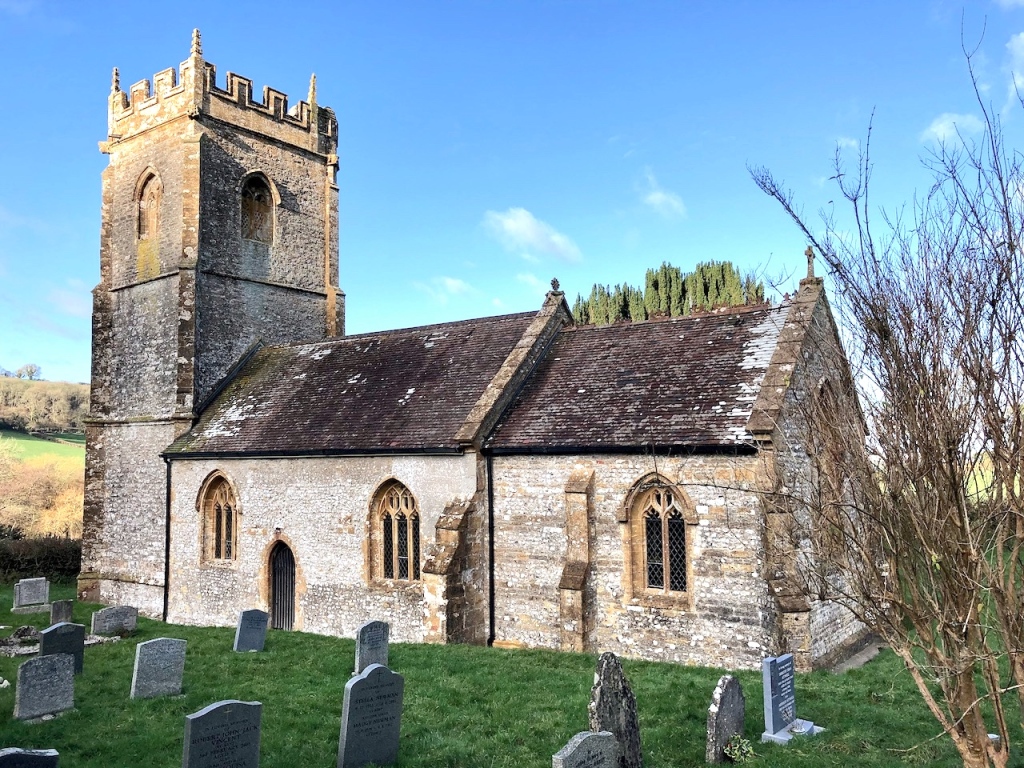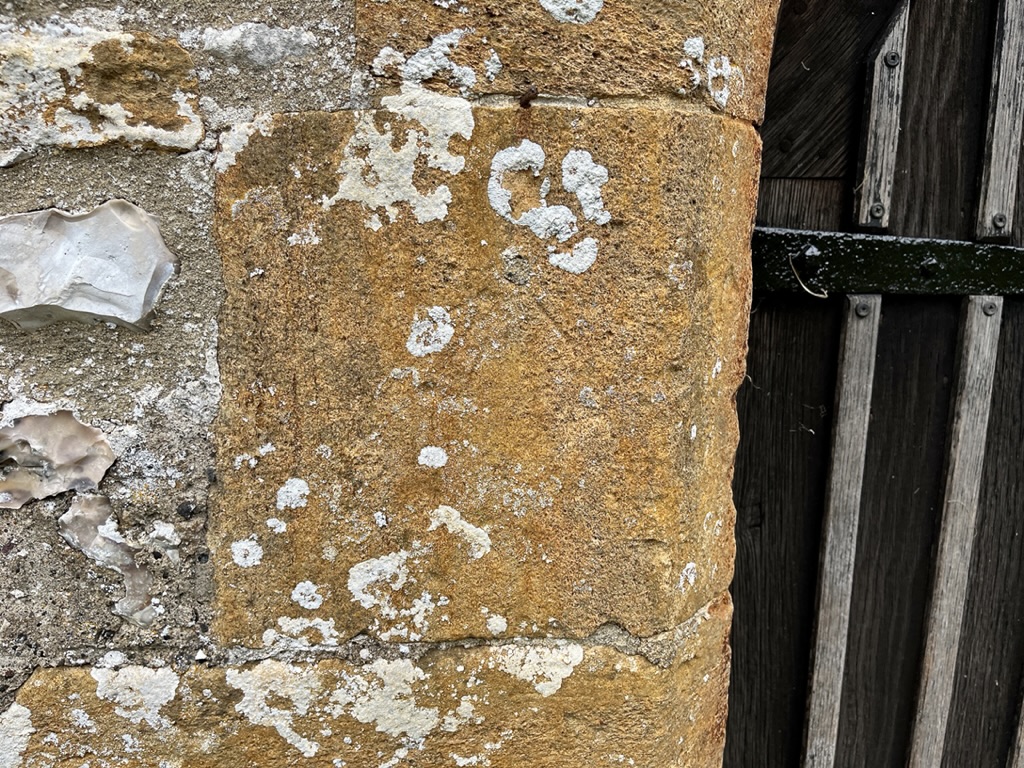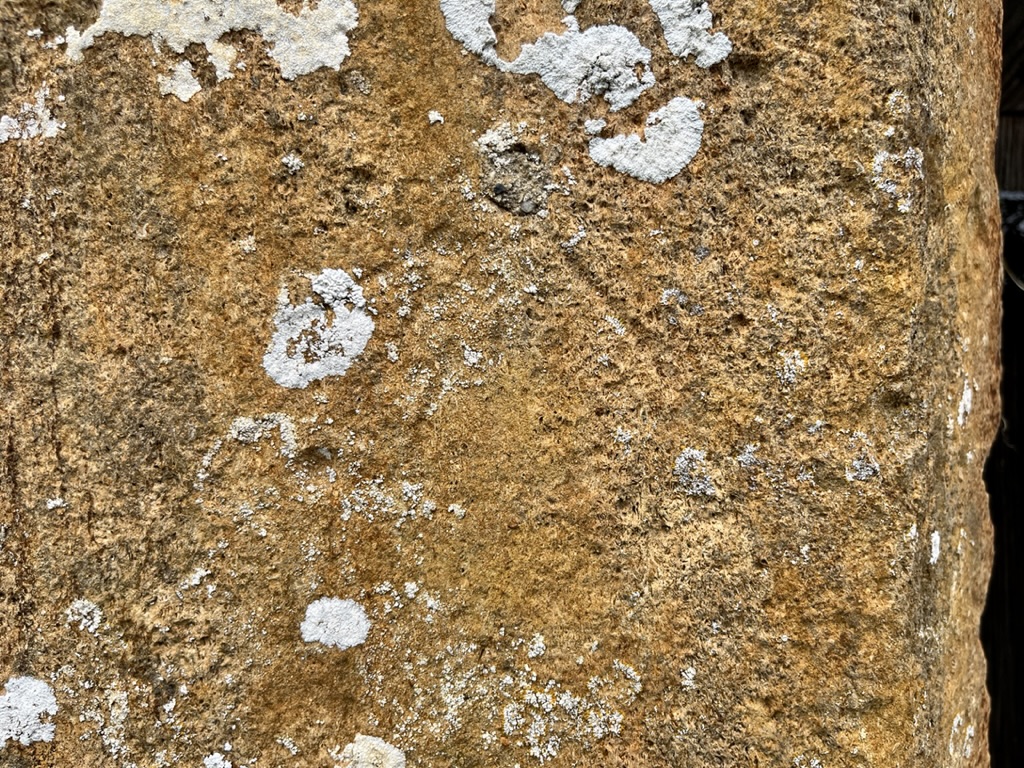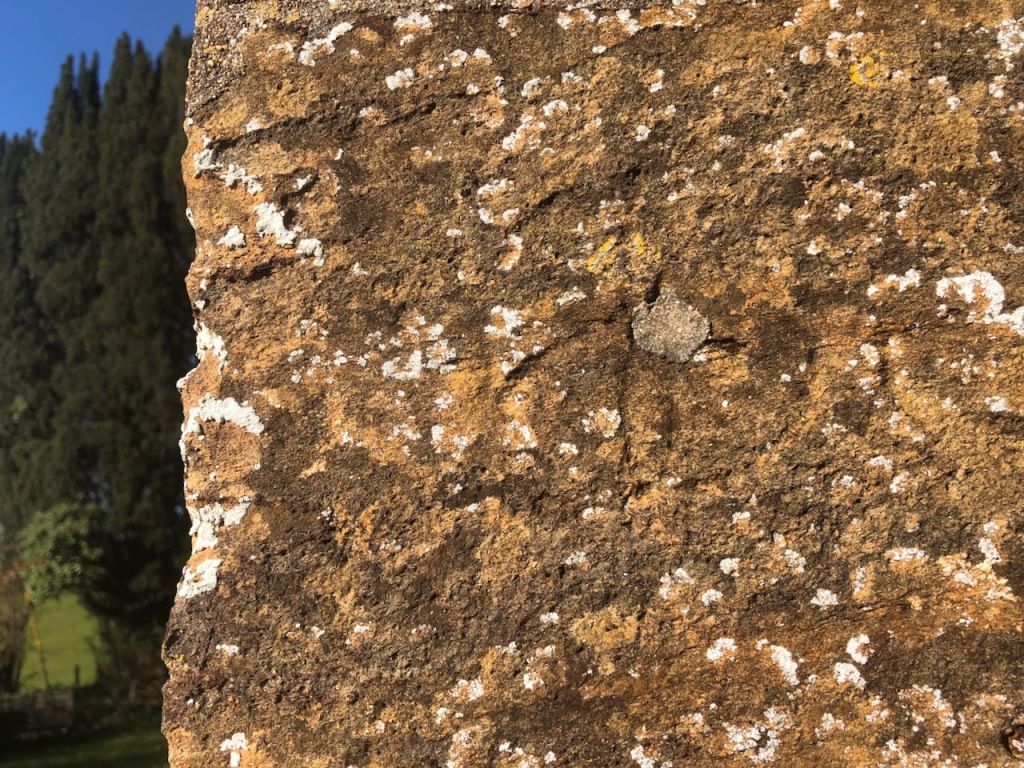
CANFORD MAGNA CHURCH . DORSET
GRADE I ❖ Saxon origins as cruciform chapel. Tower added c1180. Expansion C13, C14; C15 additions; C19 alterations. No dedication. A very fine and interesting church, the late Saxon work being of major importance HE. Without any doubt one of the most interesting churches in Dorset PEV. 50.7889 / -1.956 / SZ031988
See Canford’s Vertical Dial HERE

DIAL
The dial is within the porch, RHS of the door and partially obscured by a noticeboard. The original BSS record (2006) notes a filled gnomon hole with 8 radials, encircled [see diagram]. Four irregular moss-filled lines are clearly visible; a couple more are just detectable. The noticeboard stymies the sort of hopeful slantwise photo behind an obstruction that can occasionally be revealing.


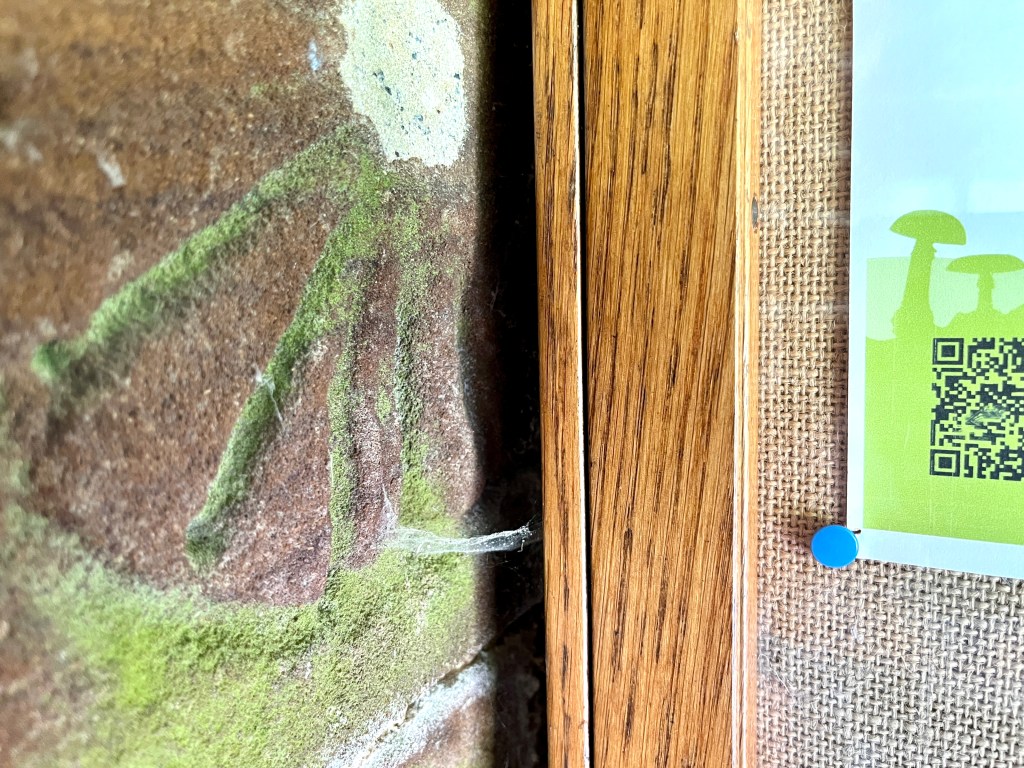

Although this is a Parish Church, it lies within the grounds of Canford School. There are some unsurprising visiting restrictions. If you have an interest in early churches, you will want to spend some time investigating the interior and working out the gradual development. See PEV DORSET p171 and ff.
There is quite a lot of graffiti, much of it old but with later pupil initials etc. As a bonus, there is a good vertical dial on the apex at the E end, which will be written up separately.



GSS Category: Scratch Dial; Mass Dial; Scratch Dial within porch; Vertical Dial
All photos: Keith Salvesen

